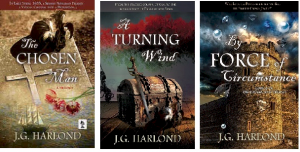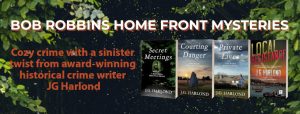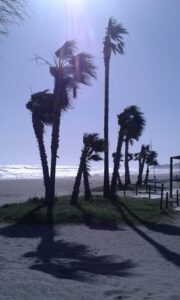
Winter in southern Andalucía can get chilly, but this year, finally, we are having a normal winter with rain, which after so many years of drought is something to celebrate. After the long Spanish Christmas, I’m back at my desk, working on the third book in my new historical fantasy series for Penmore Press, Doomsong.
‘Doomsong’ sounds a bit melodramatic, but it was the name of a sword in the ancient Norse Volsung Saga. Sigmund the Volsung pulled a sword named Gram (Anger), Doomsong and Truth-teller from the Barnstock Oak; the only person to do so.
Nowadays, this is classified as fantasy, but it comes from tales told around communal fires in the days of long-ago. Somewhere, there is truth in it. Just as somewhere there is truth in the tales of King Arthur and Excalibur. Perhaps they were meant as a warning against life’s perils, or human frailty. The stories in my new series, however, are grounded on early-medieval events.
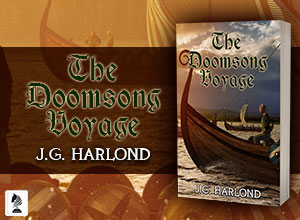
NEW RELEASE: The Doomsong Voyage by J.G. Harlond – PENMORE PRESS
I have come to writing historical fantasy rather late in my writing career, but I’ve been reading it for a good while. I’m talking here about books by Guy Gavriel Kay, and G.R.R. Martin’s Game of Thrones, which rests on a surprising amount of real history.
Kay’s stories are about real people in an imaginary version of Western Europe and include elements of real history. The Lions of Al-Rassan is in the fantasy genre, but it’s one of the best books on Spanish history I have ever read. Kay captures the power politics, racial and religious struggles of Moorish Spain so well through his characters that I lived every word – sensing that this is what it must have been like for real people. This, for me, is where historical fiction and fantasy come together, offering insight into the past. It’s also a liberating and fun way to write a story.
I wrote the first book (of what is to become a series) The Doomsong Sword, after preparing material for a Norse myths and legends project for a big publisher. They subsequently cancelled the project and I moved on to write more school textbooks. Sometime later, however, I returned to the Volsung Saga and began writing my version of the Sigurd, the Dragonslayer story.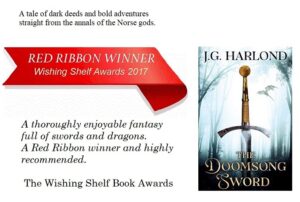
The idea for The Doomsong Voyage, came after reviewing a non-fiction Viking history, Children of Ash and Elm by Neil Price (Basic Books, 2020). Price has a flesh and blood approach to history, showing how people lived, what they believed, how and where they traded.
I spend time in Sweden visiting family every year so it isn’t hard for me to imagine those dark days, and they were dark because the eruption of a volcano covered the land with ash and blocked out the sun, making life even more difficult than it already was and bringing in Fimbulwinter – a never-ending winter. This is partly what forced early-medieval Scandinavians to find a new home on fertile land elsewhere.
Starting from this, I began the story of a young man named Finn, who sets sail on a Baltic trading knarr to find a pirate named Ice-heart in the Middle Sea. The pirate is a clan leader, who has the knowledge and force of personality required to persuade his people to leave all they know and cross the ocean to find a better life. He is not called Ice-heart without reason, though – to say more would be a spoiler. Finn is accompanied by a very strange girl with amber eyes, who is always nearby in moments of danger.
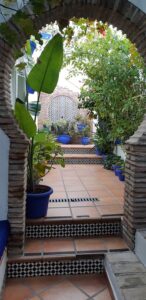 Having lived on the Mediterranean coast in Italy and Spain for more than half my life, I was familiar with how the Vikings raided and traded as far as the Levant. This fictional voyage also includes a version of Al-Andalus. My Independent state of Barbalus was the result of a weekend in the hill-top town of Vejer de la Frontera and staying in an old house with a patio like this.
Having lived on the Mediterranean coast in Italy and Spain for more than half my life, I was familiar with how the Vikings raided and traded as far as the Levant. This fictional voyage also includes a version of Al-Andalus. My Independent state of Barbalus was the result of a weekend in the hill-top town of Vejer de la Frontera and staying in an old house with a patio like this.
The Doomsong Voyage is under-pinned with documented history and includes an important current issue, the effects of a climate catastrophe. There is good deal of magic in the story, of course, but in those supposedly Dark Ages people believed in magic, shape-shifting, enchantments and curses, and the inexplicable power of the Aesir gods.
The next story is taking me back home to North Devon in the British West Country. I grew up on a Viking battlefield and I used to pass a monument at Bloody Corner in Northam almost ever day. The monument says:
“Stop Stranger Stop,
Near this spot lies buried
King Hubba the Dane,
who was slayed in a bloody retreat,
by King Alfred the Great”
Historians dispute precisely who fought whom and when, and I cannot believe King Alfred himself was involved, but there were at least two battles fought on the narrow stretch of land between Northam and Appledore between the 9th and 11th centuries. Whether Hubba (Ubbe) really did lead 33 dragonships into the estuary, as stated in the Anglo-Saxon Chronicle, I do not know, but it makes for a good story . . . Work-in-progress.
You can find the Doomsong stories (ebook or paperback) in most online stores via these universal links:
The Doomsong Sword
The Doomsong Voyage
Some other very good reading: Jean Gill’s Midwinter Dragon series .

‘an epic medieval saga of the last Vikings, set in windswept Orkney’
If you also enjoy literary historical fiction take a look at Kristin Gleeson’s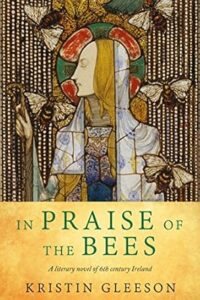 books about early medieval Ireland: In Praise of the Bees
books about early medieval Ireland: In Praise of the Bees

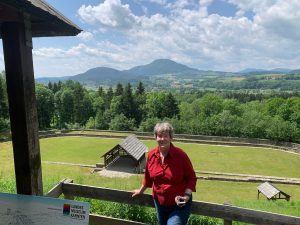
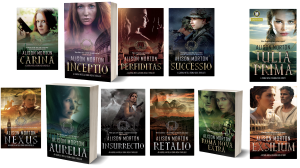
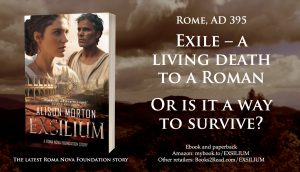

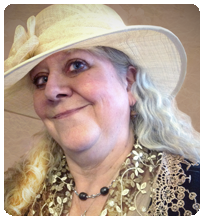 Find all Helen’s books on her Amazon Author Page or order from any good bookstore:
Find all Helen’s books on her Amazon Author Page or order from any good bookstore: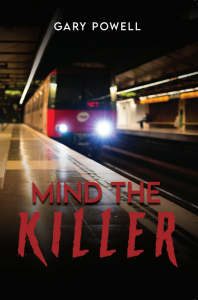
 In my crime novel Mind the Killer I have used my in-depth knowledge of London’s transport system (having been a police officer for thirty-three years in the capital) to enhance a reader’s experience. Being able to visualise fictional events at real locations is something I enjoy when reading and writing as well. Mind the Killer not only has scenes at many London Underground stations but also some well-known landmarks such as St Paul’s Cathedral.
In my crime novel Mind the Killer I have used my in-depth knowledge of London’s transport system (having been a police officer for thirty-three years in the capital) to enhance a reader’s experience. Being able to visualise fictional events at real locations is something I enjoy when reading and writing as well. Mind the Killer not only has scenes at many London Underground stations but also some well-known landmarks such as St Paul’s Cathedral. Find Gary and his books – fact and fiction – on Amazon and other online books stores.
Find Gary and his books – fact and fiction – on Amazon and other online books stores.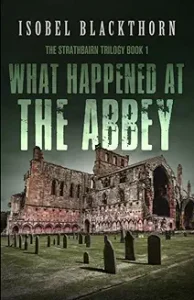
 Before coming to Spain, I was living on the Ligurian coast of Italy – hence Ludo da Portovenere (the charismatic rogue of The Chosen Man Trilogy). The Genoese coastline creeps into Ludo’s narrative when, as an involuntary exile, he reminisces about his childhood.
Before coming to Spain, I was living on the Ligurian coast of Italy – hence Ludo da Portovenere (the charismatic rogue of The Chosen Man Trilogy). The Genoese coastline creeps into Ludo’s narrative when, as an involuntary exile, he reminisces about his childhood.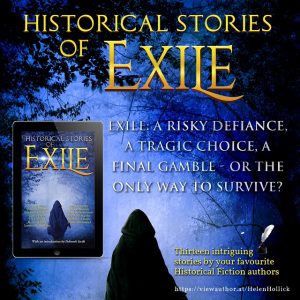
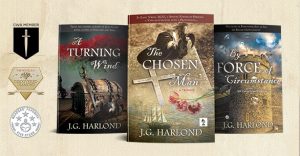 You can read about how my wicked hero Ludo da Portovenere creates mayhem in 17th Century Europe in three novels starting with The Chosen Man.
You can read about how my wicked hero Ludo da Portovenere creates mayhem in 17th Century Europe in three novels starting with The Chosen Man. 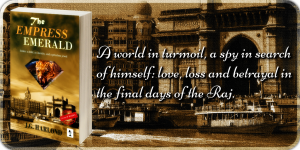 The Empress Emerald is available on:
The Empress Emerald is available on: 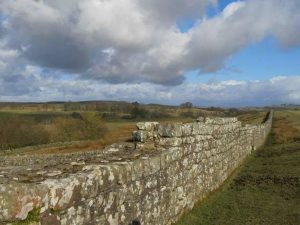
 I had a rural childhood of the sort almost unimaginable today. I grew up over 50 years ago, roaming fields and woods and lanes on foot or on my bike, often alone. I watched the progression of wildflowers over the summer; I watched planting and harvest.
I had a rural childhood of the sort almost unimaginable today. I grew up over 50 years ago, roaming fields and woods and lanes on foot or on my bike, often alone. I watched the progression of wildflowers over the summer; I watched planting and harvest. The series isn’t set in the real world, but neither is it truly a fantasy world. There are no variations from the laws of physics or nature, only (barely) a fantasy geography. There are no fae or otherworldly creatures, only the flora and fauna of northern and central Europe.
The series isn’t set in the real world, but neither is it truly a fantasy world. There are no variations from the laws of physics or nature, only (barely) a fantasy geography. There are no fae or otherworldly creatures, only the flora and fauna of northern and central Europe.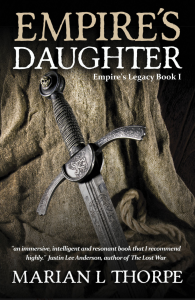 Many generations past, the great empire from the east left Lena’s country to its own defences. Now invasion threatens…and to save their land, women must learn the skills of war.
Many generations past, the great empire from the east left Lena’s country to its own defences. Now invasion threatens…and to save their land, women must learn the skills of war.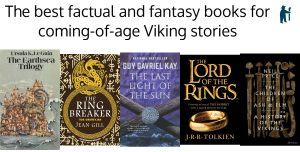
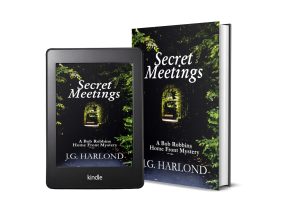
 While researching events in Britain during 1944, I came across a short comment made by someone on a history blog about how Churchill and Eisenhower met for an ultra-secret meeting at a private home on the east coast of Scotland in the month prior to D-Day.
While researching events in Britain during 1944, I came across a short comment made by someone on a history blog about how Churchill and Eisenhower met for an ultra-secret meeting at a private home on the east coast of Scotland in the month prior to D-Day.